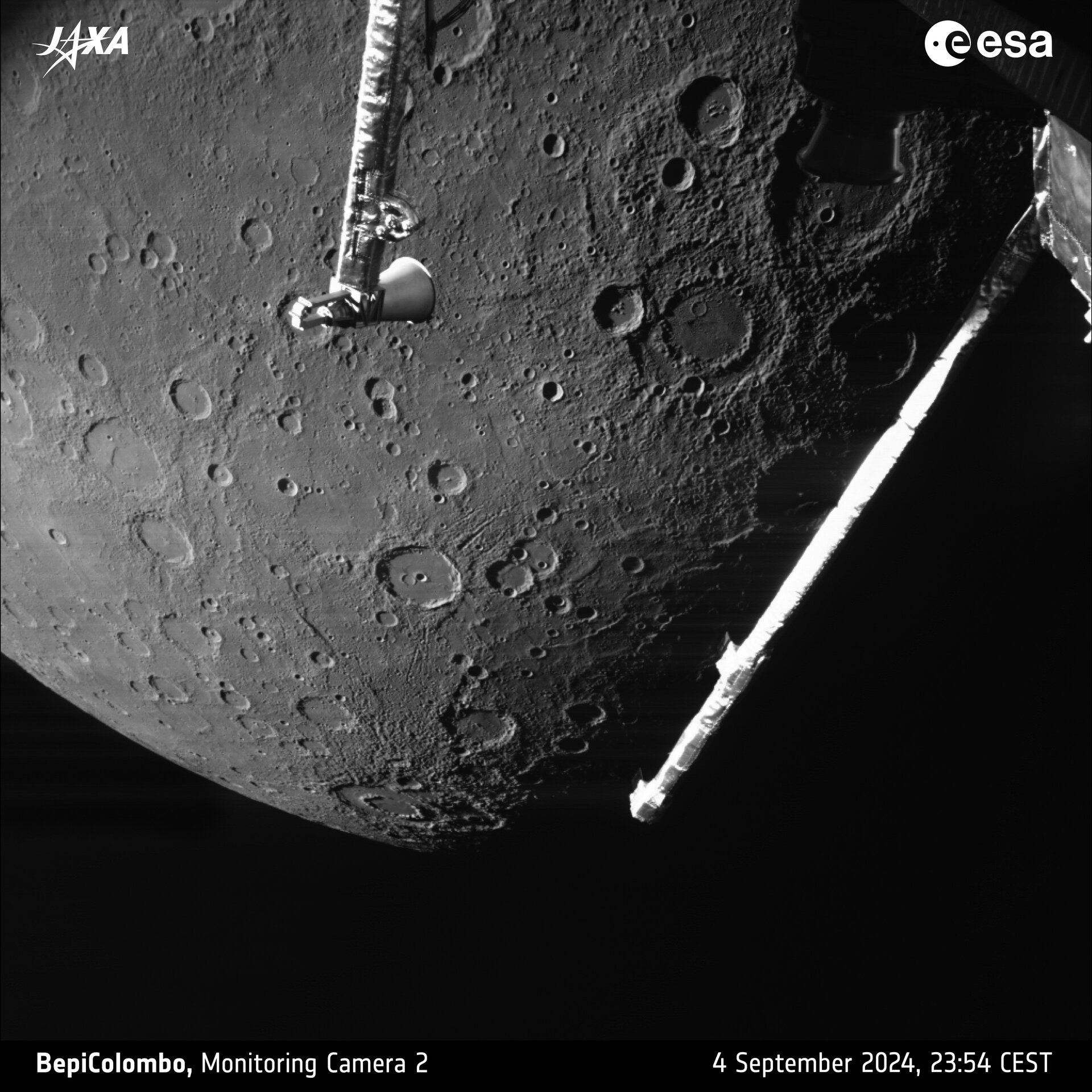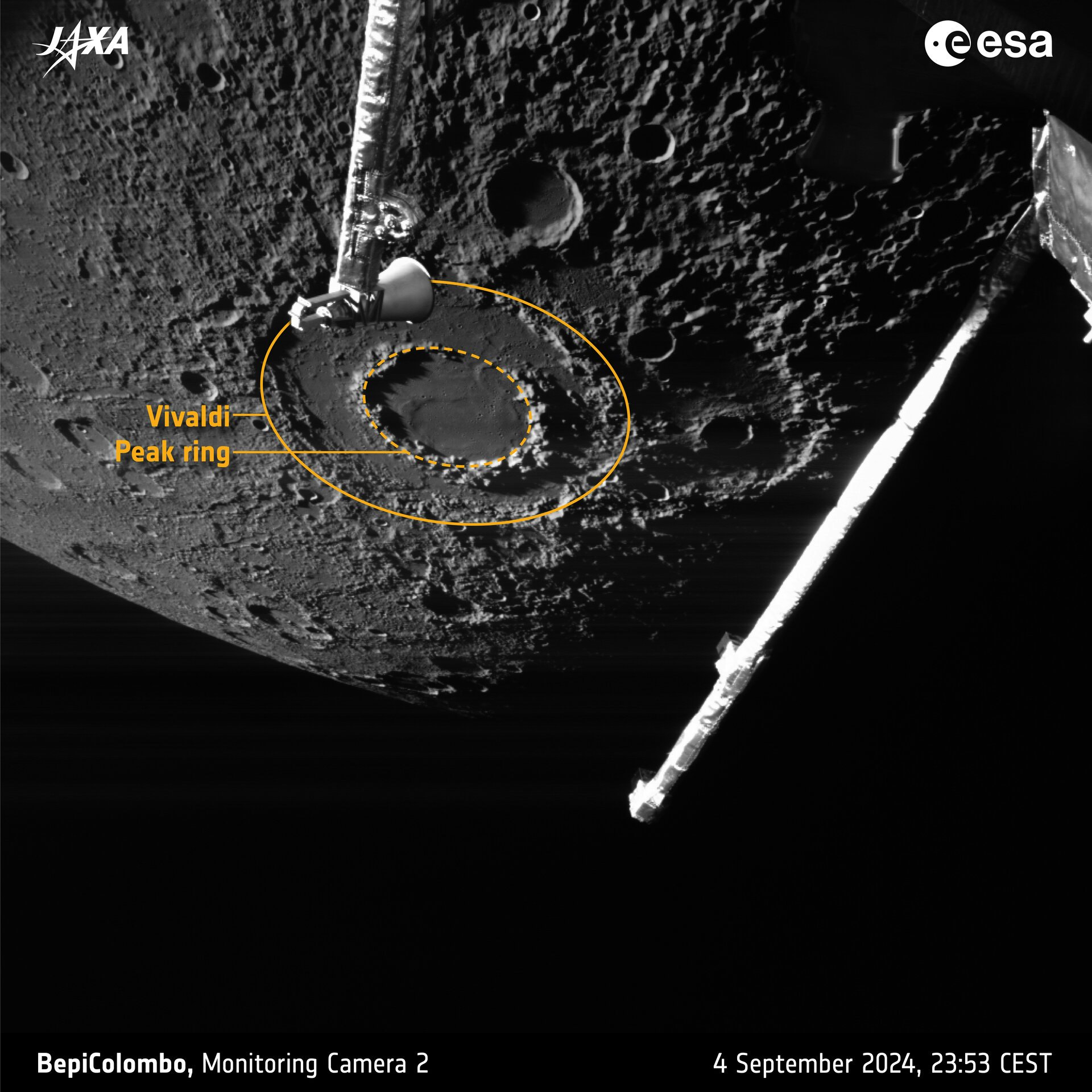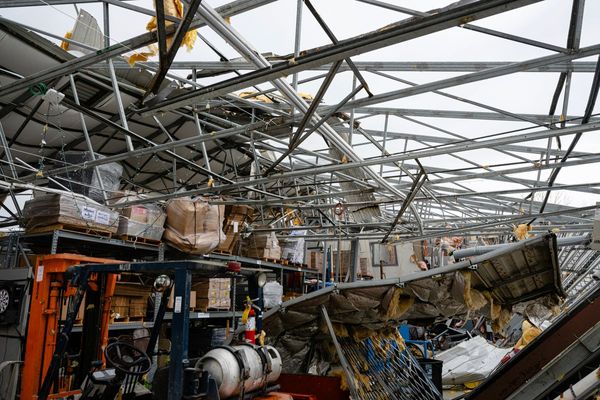
Enjoy this new video of Mercury, while you treat your ears to an invigorating piece of baroque music.
Earlier this month, Mercury took center stage in a recent video montage created from the snapshots of three cameras currently hitching a ride through the inner Solar System.
The cameras’ 1024 by 1024 pixel images typically monitor the booms and antennas of BepiColombo, humanity’s third mission — and Europe’s first — to the smallest planet in our cosmic neighborhood. But on September 4, the cameras obtained a clear view of Mercury’s south pole and captured shots of this mysterious planet’s textured surface.
“Watch the closest flyby of a planet ever,” wrote the European Space Agency (ESA). ESA expects, along with mission partner Japan Aerospace Exploration Agency (JAXA), that BepiColombo will continue to reveal new details about how the inner planets evolved.
BepiColombo won’t begin its main mission, when it enters orbit around Mercury, for another two years. But the September 4 gravity assist was a rendezvous that used the planet’s gravity to “steer itself on course” to get on track for the new chapter awaiting the probe in 2026, ESA officials wrote in a video description.
The video shows some of the tens of thousands of impact craters that pepper Mercury’s surface. One large crater that comes into view was the inspiration for the video’s soundtrack.
Musicians, dancers, writers and painters are represented in the names of Mercury’s craters. Antonio Vivaldi’s “The Four Seasons” is heard in the timelapse video because the cameras captured footage of Vivaldi crater not long after BepiColombo made its closest approach.

BepiColombo was 191 miles away from Mercury when the planet first appeared, and the closest approach was just 103 miles from the planet. The video sequence lasted about 24 hours. It wrapped up when the spacecraft was about 151,000 miles from Mercury, the video’s description said.
“This timelapse is made up of 128 different images captured by all three of BepiColombo’s monitoring cameras,” officials wrote. “We see the planet move in and out of the fields of view of M-CAM 2 and 3, before M-CAM 1 sees the planet receding into the distance at the end of the video.”
It won’t be long until the spacecraft returns. BepiColombo’s next Mercury flyby will take place on December 1, followed by another one on January 8. But after that, it won’t come near Mercury until it enters its orbit, which won’t be for another two years.







